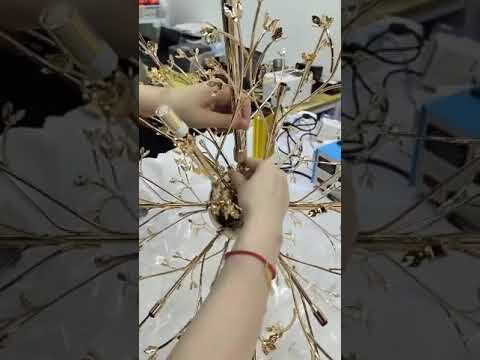Are you looking to add a unique touch to your home decor? Look no further than experimenting with textures in lamp making. By incorporating different materials such as wood, metal, glass, and fabric, you can create stunning and one-of-a-kind lighting fixtures that will elevate any room in your house. Join us as we explore the endless possibilities of texture in lamp design and find inspiration for your next DIY project.
How can texture be demonstrated in art?
In art, texture can be demonstrated through various techniques such as using different brush strokes, layering paint or mixed media, or adding physical elements like sand or fabric to the artwork. By incorporating these methods, artists can create a visual and tactile experience for the viewer, adding depth and interest to the piece. Texture not only enhances the overall composition of the artwork, but also allows the audience to engage with the piece on a more sensory level, making it a crucial element in creating captivating and dynamic art.
What are the four types of texture in art?
In art, there are four main types of texture: actual texture, visual texture, tactile texture, and implied texture. Actual texture refers to the physical feel of a surface, visual texture is the illusion of texture created through artistic techniques, tactile texture is the perceived texture when physically touching an artwork, and implied texture is the suggestion of texture through visual elements such as lines, shapes, and colors. These different types of texture add depth and interest to a piece of art, engaging the viewer’s senses and enhancing the overall aesthetic experience.
What is the process for creating a texture pattern?
Creating a texture pattern involves careful planning and execution. First, select a base material such as paper, fabric, or clay. Next, consider the desired outcome and choose a technique that will achieve the desired texture, such as stamping, embossing, or weaving. Experiment with different tools and methods to create a unique and visually appealing pattern. Finally, practice patience and precision to ensure consistent and professional results.
To enhance the texture pattern, consider incorporating elements such as color, shape, and scale. Experiment with different color combinations to add depth and interest to the pattern. Play with the size and arrangement of the texture elements to create a dynamic and visually striking design. Remember to balance repetition and variation to keep the pattern engaging and harmonious. With dedication and creativity, you can create a texture pattern that is both visually captivating and technically impressive.
Crafting Unique Lamps with Surprising Textures
Elevate your space with our handcrafted lamps designed to bring a touch of sophistication and style to any room. Each lamp is meticulously crafted with surprising textures that add a modern twist to your home decor. From sleek metallic finishes to intricate woven patterns, our lamps are sure to make a statement in any setting.
Discover the art of lighting with our collection of unique lamps that blend form and function effortlessly. Whether you’re looking for a bold centerpiece or a subtle accent piece, our lamps are the perfect way to showcase your personal style and elevate your living space. Illuminate your home with a touch of creativity and elegance with our handcrafted lamps that promise to brighten up any room with their distinct textures and designs.
Unleashing Creativity through Texture in Lamp Design
Texture plays a crucial role in lamp design, as it adds depth and dimension to the overall aesthetic. By incorporating different textures such as smooth glass, rough metal, or soft fabric, designers can create visually appealing pieces that engage the senses. Whether it’s a sleek, modern lamp with a glossy finish or a rustic lamp with a distressed texture, the possibilities are endless when it comes to unleashing creativity through texture in lamp design.
Experimenting with textures not only adds visual interest to a lamp but also enhances the tactile experience for users. Imagine running your hand over a lamp with a velvety texture or feeling the coolness of a lamp with a metallic finish. Texture allows designers to evoke different emotions and moods, making each lamp a unique and captivating piece of art. By embracing the power of texture, designers can truly unleash their creativity and transform ordinary lamps into extraordinary works of art.
Exploring the world of lamp making through experimenting with textures has proven to be a creative and inspiring endeavor. By incorporating various materials and techniques, designers can achieve truly unique and visually stunning results. Whether it’s adding a touch of elegance with delicate lace or creating a modern and industrial look with metal accents, the possibilities are endless. This innovative approach to lamp design not only adds an element of intrigue to any space, but also allows for personal expression and creativity to shine through. With a focus on textures, the realm of lamp making becomes a playground for artistic exploration and boundless potential.



